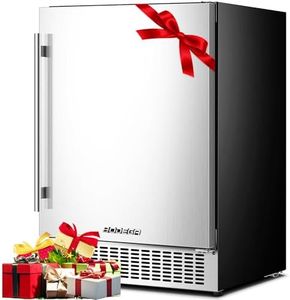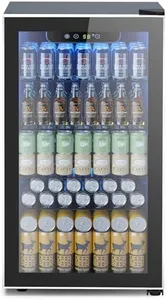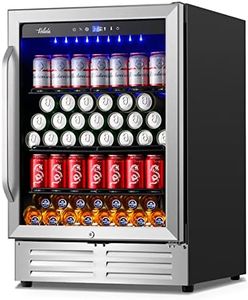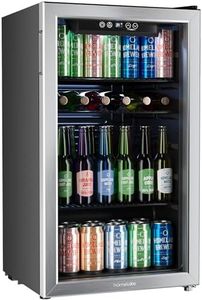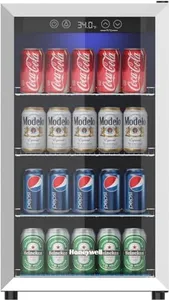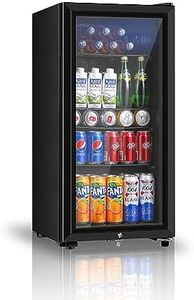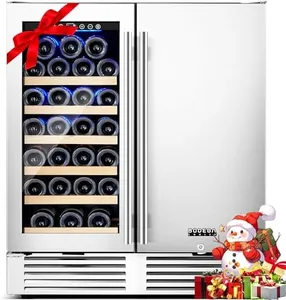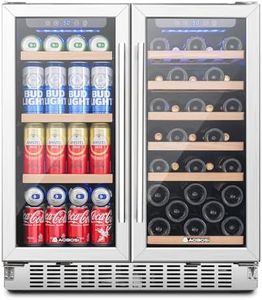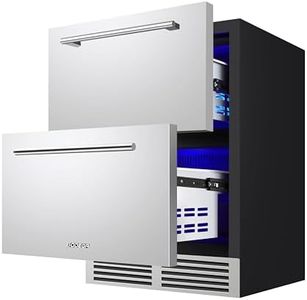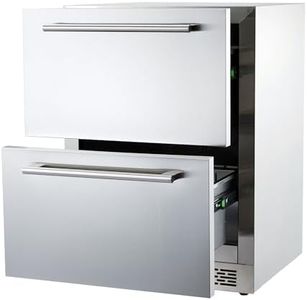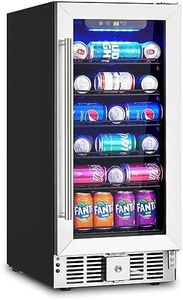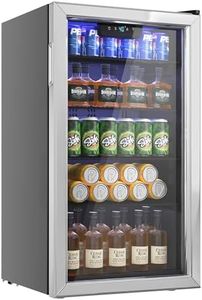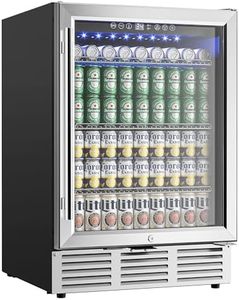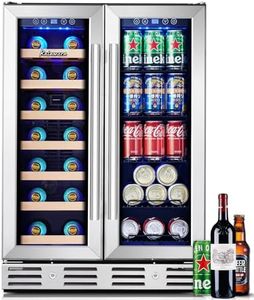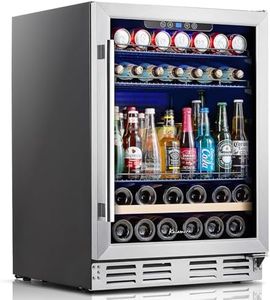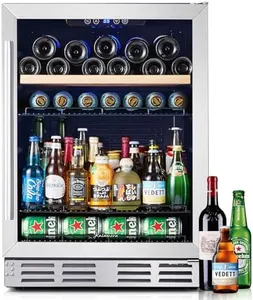10 Best Beer Fridges 2025 in the United States
Our technology thoroughly searches through the online shopping world, reviewing hundreds of sites. We then process and analyze this information, updating in real-time to bring you the latest top-rated products. This way, you always get the best and most current options available.

Our Top Picks
Winner
Electactic Mini Fridge 130 Can Beverage Refrigerator Cooler, 3.2 Cu.Ft Drink Fridge for Soda Wine Beer, Adjustable Temperature Control for Home Office, Black
Most important from
342 reviews
The Electactic Mini Fridge 130 Can Beverage Refrigerator Cooler is a compact and versatile option for those needing a dedicated space to chill beverages. With a capacity of 3.2 cubic feet, it can hold up to 130 standard cans or a mix of cans and bottles on its four adjustable wire racks. This makes it suitable for home offices, man caves, basements, and other relaxation spaces. The fridge offers a temperature range of 40℉ to 61℉, allowing for precise control to suit different beverage needs. The high-performance compressor ensures constant and even cooling, while the glass door maintains an airtight seal to keep the cold air in. One notable feature is its quiet operation, which means it won't be a disturbance in quiet environments.
However, it lacks an Energy Star certification, indicating it may not be the most energy-efficient option available, with an annual energy consumption of 180 kilowatt-hours. The fridge's dimensions (19.29 x 17.32 x 30.79 inches) make it a good fit for under-counter installation or as a freestanding unit, although its manual defrost system could be seen as a minor inconvenience. The black color and compact form factor add a sleek and modern touch to any space. While it offers a lot of storage and cooling options, its energy consumption and manual defrost system might be points to consider for the eco-conscious or those looking for lower maintenance options.
Most important from
342 reviews
Velieta 24 Inch Beverage Refrigerator Cooler,210 Cans Wide Beverage and Beer Fridge with Glass Door and Powerful Cooling Compressor, Built-in/Freestanding Drink Fridge for Kitchen, Bar or Office
Most important from
1128 reviews
The Velieta 24 Inch Beverage Refrigerator Cooler is an impressive option for those needing a spacious beer fridge, boasting a whopping capacity of 210 cans. This makes it particularly suitable for larger gatherings or for placing in home bars and offices where a variety of drinks are stored. The inclusion of three adjustable shelves is a notable strength, allowing you to customize the space according to your beverage sizes.
When it comes to cooling performance, the powerful compressor efficiently chills drinks down to 37°F, offering a versatile temperature range of 37-64°F. Users will appreciate the quiet operation and low vibration, making it a great choice for home environments. The interior blue LED light is also a practical feature, illuminating the contents for easy selection, even in dim lighting.
There are a few drawbacks to consider. While the stainless steel design adds a modern touch, it may not appeal to everyone’s aesthetic preferences. It's also worth noting that this unit does not have an Energy Star certification, which could mean higher energy costs over time compared to more efficient models. The absence of a built-in freezer may be a limitation for those wanting a multi-functional appliance.
Another aspect to consider is the weight of 105.8 pounds, which may pose challenges for transportation or installation, particularly in tight spaces. The locking mechanism is a nice safety feature, particularly in homes with young children, but it could be a hassle for frequent access.
The Velieta beverage refrigerator is a solid choice for users looking for ample storage and efficient cooling, ideal for entertaining or frequent use. Just keep in mind its energy efficiency and weight when making your decision.
Most important from
1128 reviews
hOmeLabs Beverage Refrigerator and Cooler - Mini Fridge with Glass Door for Soda Beer or Wine - 120 Cans Capacity - Small Drink Dispenser Machine for Office or Bar with Adjustable Removable Shelves
Most important from
6740 reviews
The hOmeLabs Beverage Refrigerator and Cooler is a versatile mini fridge perfect for storing up to 120 slim cans of soda, beer, or wine. Its compact size (17.3"D x 18.9"W x 33.3"H) makes it suitable for various spaces, whether under countertops or as a standalone unit in offices, bars, or dorm rooms. The adjustable, removable shelves offer flexible storage options, accommodating different types of beverages including larger bottles of beer and wine.
The stainless steel and glass door design, combined with a soft white LED light, adds a touch of elegance and provides high visibility, making it easy to showcase your drink selection even at night. The temperature range of 34°F to 50°F is controlled by a digital thermostat, ensuring your beverages are kept at the ideal temperature. The automatic defrost feature and quiet convection cooling fan contribute to easy maintenance and efficient cooling. The reversible door adds to the convenience, allowing the fridge to fit seamlessly into different layouts.
However, the unit lacks an Energy Star rating, which might be a concern for those prioritizing energy efficiency. Additionally, while the cooling fan is designed to be quiet, noise levels can be subjective and may still be noticeable in quieter environments. Despite these minor issues, the hOmeLabs Beverage Cooler is a stylish and functional choice for anyone needing a dedicated space to keep their drinks cool.
Most important from
6740 reviews
Buying Guide for the Best Beer Fridges
Choosing the right beer fridge can greatly enhance your beer-drinking experience by ensuring your beverages are stored at the perfect temperature and are easily accessible. When selecting a beer fridge, it's important to consider several key specifications to ensure you get the best fit for your needs. Here are the main factors to consider and how to navigate them.FAQ
Most Popular Categories Right Now
